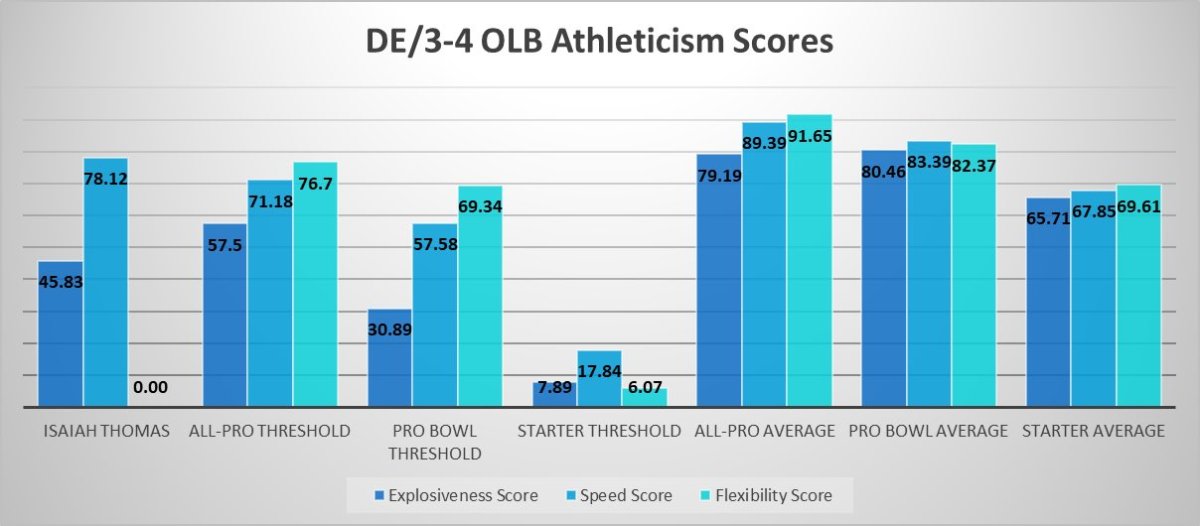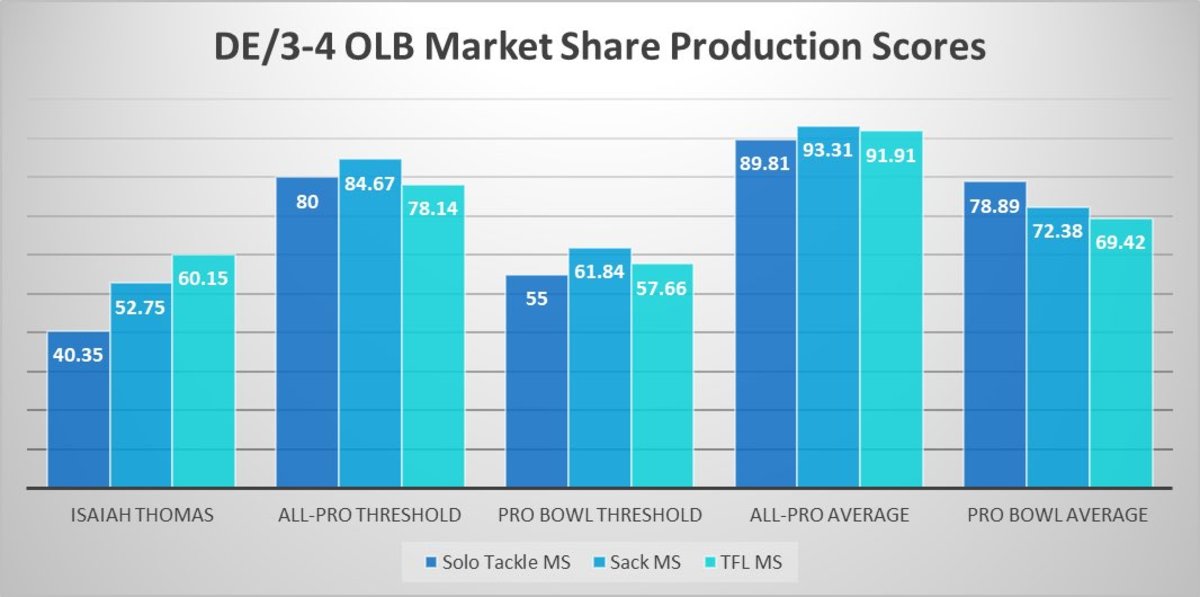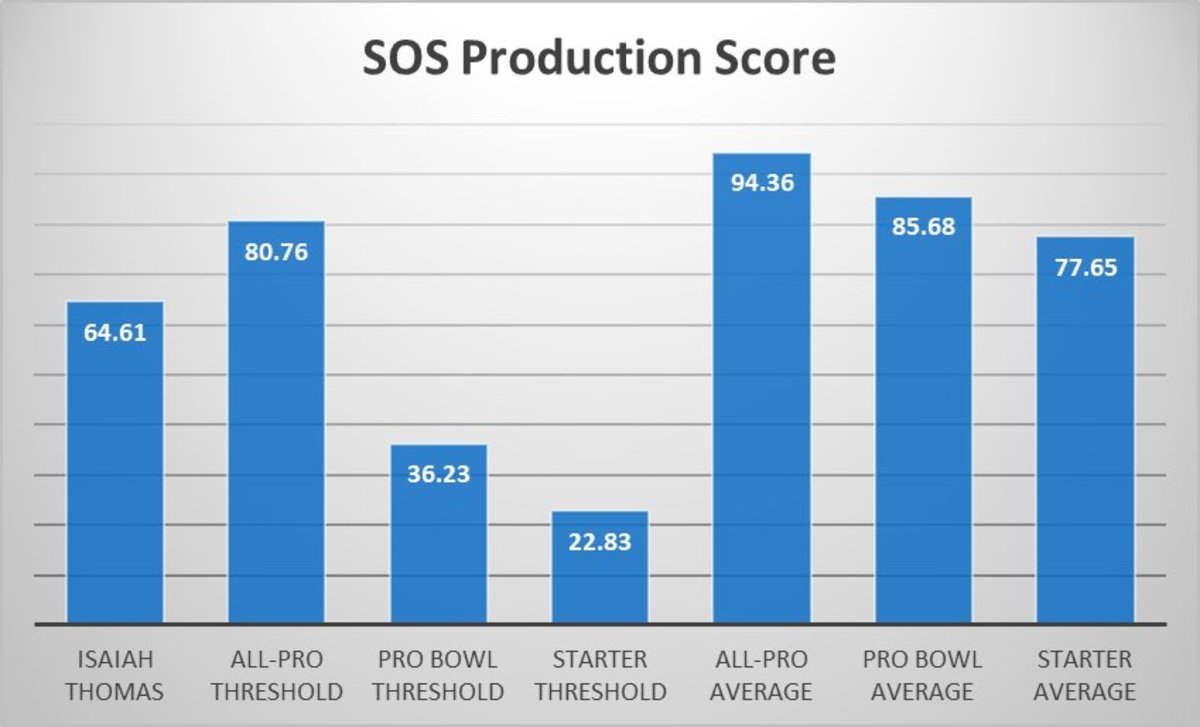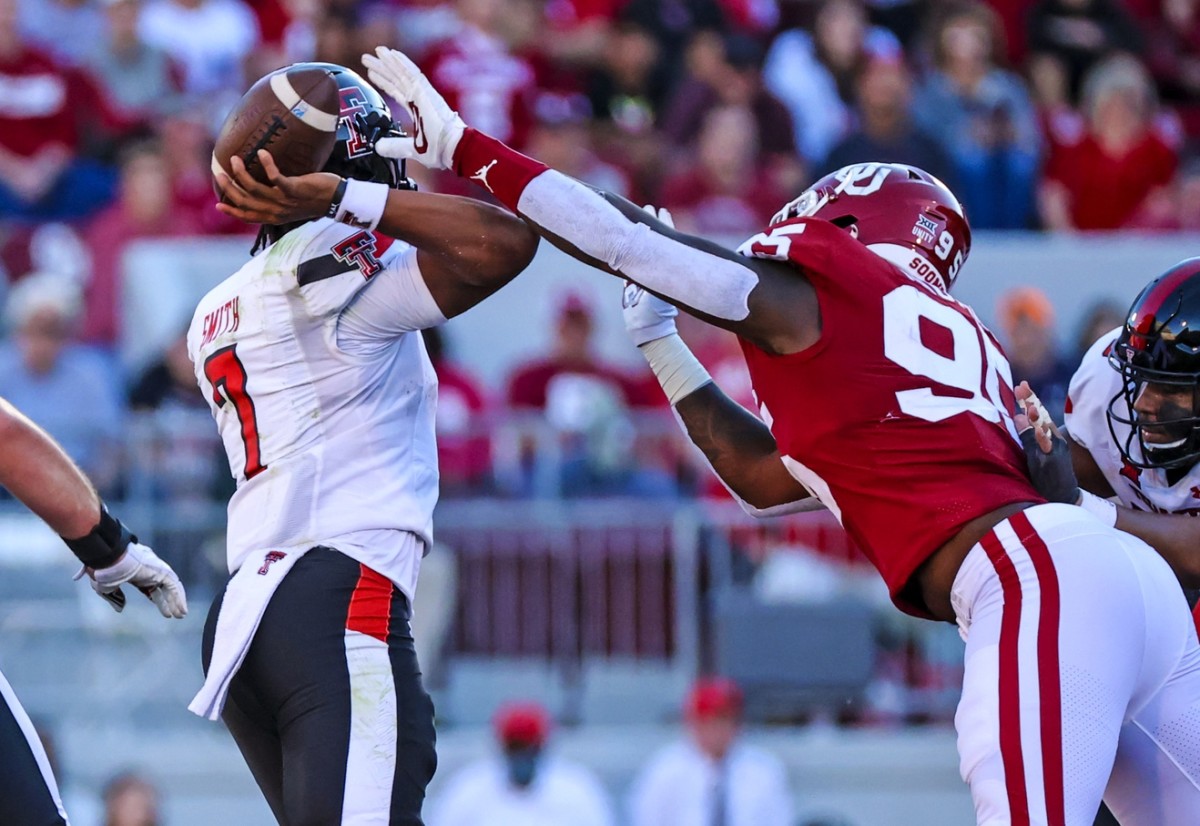Cleveland Browns Comprehensive NFL Draft Review: Isaiah Thomas, DE Oklahoma
With the 223rd pick, the Cleveland Browns made their third selection from the University of Oklahoma, selecting defensive end Isaiah Thomas.
Thomas had more sacks over the past two seasons than his counterpart Nik Bonitto, who was selected at the end of the second round by the Denver Broncos. Thomas skipped the team's bowl game and participated in the Reese's Senior Bowl along with teammate and fellow defensive lineman Perrion Winfrey.
Athletic Profile
Age: 23 (Born December 3rd, 1998)
Height: 6'4 7/8"
Weight: 266 lbs
Arm Length: 33 1/4"
40-yard dash: 4.7
Broad Jump: 117"
Vertical Jump: 31.5"
Bench Press: 23 reps (Pro Day)
Thomas has the long arms the Browns look for in defensive ends. His speed is good at his size, but his explosion was underwhelming. He didn't test agility, so there's nothing to go off of there. However, in his case, it's likely because he would not have done terribly well. While Thomas will turn 24 during his rookie year, his age is not a problem. It's just unusual for the Browns under Andrew Berry as he is now the oldest prospect selected in three draft classes.

Production
2020 (Best Season)
Solo Tackles: 20 (4.9%)
Tackles for Loss: 13 (16%)
Sacks: 8.5 (22.9%)
2021 (Last Season)
Solo Tackles: 18 (3.5%)
Tackles for Loss: 11.5 (11.8%)
Sacks: 8 (24.2%)
The fact that Thomas experienced success as a junior might be a factor in why the Browns were comfortable in drafting him older than any other prospect over the past three seasons. Had he declared after his junior season, the Browns likely would've had him on their board.

Between his market share production and strength of schedule, Thomas was effective, but doesn't quite make it to the long term starter average. Oklahoma's 2020 schedule was far better than 2021, playing Texas, then Iowa State twice before facing off against Florida in their bowl game.
This past year, the Sooners played teams like Western Colorado, Tulane and another bad Nebraska team. They did play talented Baylor and Oklahoma State outfits, but Thomas did not play in the team's bowl game against Oregon.

Game Tape
Nominally a defensive end, Thomas played up and down the line during his time at Oklahoma, playing anywhere from a three-tech all the way out to a nine. Thomas has a good first step and can generate speed quickly off the ball, enabling him to create momentum and some added pop in his hands.
At times, he will simply shoot a gap and get through to put put immediate pressure on the play before it's started. More often, it enables him to deliver a strong punch that can jolt opponents and give him immediate control of the play. His hands are one of the aspects of his game that stands out on tape.
Not only can he deliver a punch, but he keeps opponents out of his body, can control blockers and defeat blocks. His understanding of placement and the efficiency with which he can operate is advanced relative to the collegiate level. He can stack and shed or control the blocker, making it difficult for them to reach him to get outside of him.
Thomas is stout at the point of attack and doesn't give up much ground, often able to frustrate opposing guards in the process. He has an excellent understanding of how to play his role within the scheme, willing to do the dirty work for the sake of the team. In that respect, it's easy to understand why the Sooners coaching staff played him in so many spots.
Thomas, meanwhile, struggles to change directions. If he gets run past a play, he has virtually no chance to recover. He doesn't offer much bend and his movement can best be described as meandering. Thomas lacks hip flexibility but his ankles might be even worse. The best thing Thomas will show is his ability to fire off the ball at an angle well, but after that, he's out of luck. He ends up using his hands as levers to make major course changes.
Fortunately, Thomas does a good job with angles, be it working down the line or in pursuit. His effort in pursuit is good and will make some tackles down the field. However, the lack of agility and struggles to change direction will also leave him grasping at air in tackling attempts as well as on the ground. That's part of why he has to be so disciplined staying in his lane, because if he didn't, his team would consistently get gashed.
As a pass rusher, Thomas either gets through immediately or wins with his hands to defeat blocks. He has flashed a spin move, which has had its moments. Thomas does have excellent closing speed, but is vulnerable to getting juked by the passer.

Fit, Usage and Projection
Thomas profiles as a meat and potatoes base end, which fits exactly what the Browns want from the position. He's stout against the run, should be able to avoid getting reached and can potentially collapse the pocket in pass rushing situations.
It wouldn't be a huge surprise if Thomas gets opportunities quicker than some of the other younger players on the roster simply because he's ready to go out of the box. Coaches can trust him to do his job, which is important.
Theoretically, Thomas can kick inside to rush the passer as well. The problem is the Browns have a number of options that can contribute in that role, many of which were added this offseason including Taven Bryan and fellow rookie Perrion Winfrey.
Unless Thomas can improve his flexibility and balance, his upside is rather limited. He's not likely to be anything more than a depth option that might be able to give players like Myles Garrett the occasional breather. But given where he was drafted, that would be a productive selection.
